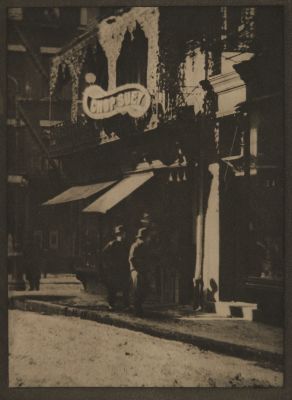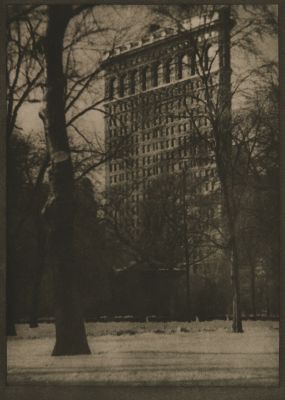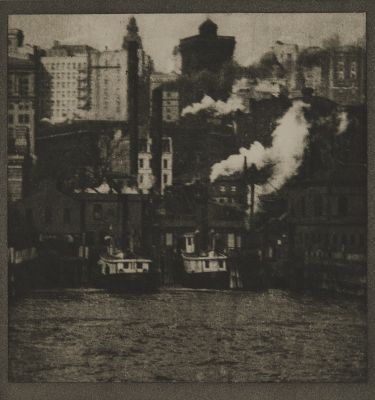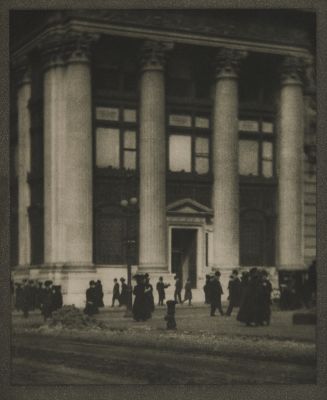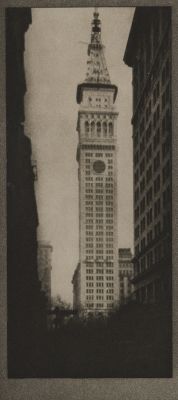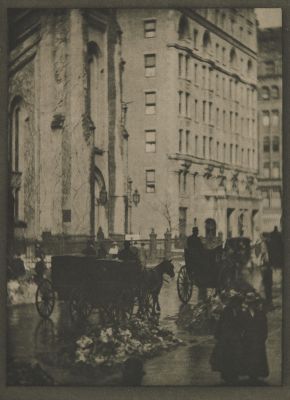
Title
The Unfinished BridgeArtist
Coburn, Alvin Langdon (American, 1882-1966)Key FigurePublication
New YorkDate
1913Process
PhotogravureAtelier
Alvin Langdon CoburnImage Size
16 x 17 cm
In 1912, Ezra Pound said New York after dark was the most beautiful city in the world. The metropolis had seemingly come a long way the two decades since Jacob Riis’s 1890 book How the Other Half Lives, when beauty was nowhere in the picture, and it was fast becoming the most photographed city in the world. Although New York still had terrible slums, Coburn, like Steichen, Stieglitz, and others, chose not to photograph them but was instead caught up with the energy and speed of the modern city. After the favorable reception of London in 1909, Coburn planned to publish a book a year. He had started to work on Edinburgh but New York probably seemed a better financial proposition. He stuck to the same format—hand-pulled photogravures, brown/gray paper, simple design, gold blocking on the cover, paler gray/brown nsner pages inside—but this time he made sure to secure his preferred author, H. G.Wells, in advance.Who better to write about the city of author, H. G. Wells. Coburn wrote to Stieglitz, “I have been working on the New York book plates which have made me as homesick as blazes.” Photogravure was indeed “a jealous mistress.” It soon required that Coburn build an extension to act as a pressroom, housing the two photogravure presses with a roof garden on top in April 1910 to maintain hectic print production levels. (Imagining Paradise) Coburn’s New York is one of the cornerstone photobooks of the 20th century and considerably more scarce than the photographer’s groundbreaking sister publication, London, put out in the same format in 1909. "Of the two books, it is the New York volume that might be considered the more proto-modernist in spirit, not only because New York itself was the most palpably modern city, epitomized by that great leitmotif of early modernist photography, the skyscraper, but also because the form of the city, as created by these large, monolithic buildings, pushed Coburn towards a more radical way of seeing" (Parr & Badger). (The Truthful Lens no. 36)
Reproduced / Exhibited
Foster, Sheila J, Manfred Heiting, and Rachel Stuhlman. Imagining Paradise: The Richard and Ronay Menschel Library at George Eastman House, Rochester. Göttingen: Steidl, 2007 p. 226
R
oberts, Pamela G. Alvin Langdon Coburn. Madrid: Fundación Mapfre, 2014. cat. 124.



